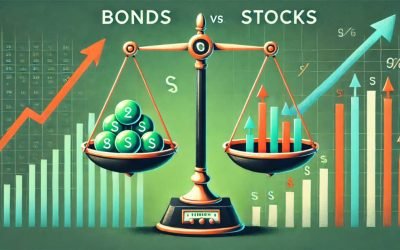Introduction to Technical Analysis for Investors
Technical analysis is a method used by investors to evaluate and predict the future price movements of securities based on historical price data and trading volume. Unlike fundamental analysis, which focuses on a company’s financial health and economic factors, technical analysis relies on chart patterns, indicators, and statistical measures to make investment decisions. This article delves into the best technical analysis methods for investors, providing a comprehensive guide to help you navigate the complex world of market analysis.
Understanding the Basics of Technical Analysis
What is Technical Analysis?
Technical analysis is a trading discipline employed to evaluate investments and identify trading opportunities by analyzing statistical trends gathered from trading activity, such as price movement and volume. Unlike fundamental analysis, which attempts to evaluate a security’s intrinsic value, technical analysis focuses on patterns of price movements, trading signals, and various other analytical charting tools to evaluate a security’s strength or weakness.
Key Principles of Technical Analysis
Technical analysis is built on three main principles:
- Market Action Discounts Everything: This principle suggests that all known information is already reflected in the price of a security. Therefore, analyzing price movements is sufficient to make informed trading decisions.
- Prices Move in Trends: Technical analysts believe that prices move in identifiable trends, which can be upward, downward, or sideways. Recognizing these trends is crucial for making profitable trades.
- History Tends to Repeat Itself: Historical price movements tend to repeat over time due to market psychology. By studying past price patterns, investors can predict future price movements.
Popular Technical Analysis Methods
1. Moving Averages
Moving averages are one of the most commonly used technical indicators. They smooth out price data to create a single flowing line, making it easier to identify the direction of the trend. There are two main types of moving averages:
Simple Moving Average (SMA)
The Simple Moving Average (SMA) is calculated by taking the arithmetic mean of a given set of prices over a specific number of periods. For example, a 10-day SMA is the average of the closing prices of the last 10 days.
Exponential Moving Average (EMA)
The Exponential Moving Average (EMA) gives more weight to recent prices, making it more responsive to new information. This is particularly useful for identifying short-term trends.
2. Relative Strength Index (RSI)
The Relative Strength Index (RSI) is a momentum oscillator that measures the speed and change of price movements. It ranges from 0 to 100 and is typically used to identify overbought or oversold conditions in a market. An RSI above 70 indicates that a security is overbought, while an RSI below 30 suggests that it is oversold.
3. Bollinger Bands
Bollinger Bands consist of a middle band (usually a 20-day SMA) and two outer bands that are standard deviations away from the middle band. These bands expand and contract based on market volatility. When the price moves closer to the upper band, the security is considered overbought, and when it moves closer to the lower band, it is considered oversold.
4. MACD (Moving Average Convergence Divergence)
The MACD is a trend-following momentum indicator that shows the relationship between two moving averages of a security’s price. It is calculated by subtracting the 26-day EMA from the 12-day EMA. The result is the MACD line. A nine-day EMA of the MACD line, called the “signal line,” is then plotted on top of the MACD line, which can function as a trigger for buy and sell signals.
5. Fibonacci Retracement
Fibonacci retracement levels are horizontal lines that indicate where support and resistance are likely to occur. They are based on the Fibonacci sequence and are used to predict the potential reversal levels of a security’s price. The key Fibonacci retracement levels are 23.6%, 38.2%, 50%, 61.8%, and 100%.
Advanced Technical Analysis Techniques
1. Ichimoku Cloud
The Ichimoku Cloud, also known as Ichimoku Kinko Hyo, is a comprehensive indicator that defines support and resistance, identifies trend direction, gauges momentum, and provides trading signals. It consists of five lines: Tenkan-sen, Kijun-sen, Senkou Span A, Senkou Span B, and Chikou Span. The area between Senkou Span A and B forms the “cloud,” which is used to identify potential support and resistance levels.
2. Elliott Wave Theory
The Elliott Wave Theory is based on the idea that market prices unfold in specific patterns, called waves, which are a reflection of the underlying social mood of the market participants. According to this theory, there are five waves in the direction of the main trend (impulse waves) followed by three corrective waves. Understanding these patterns can help investors predict future price movements.
3. Volume Analysis
Volume analysis involves examining the trading volume of a security to confirm trends and predict potential reversals. High volume during an uptrend indicates strong buying interest, while high volume during a downtrend suggests strong selling pressure. Volume analysis can be used in conjunction with other technical indicators to enhance trading decisions.
Combining Technical Analysis Methods
Using Multiple Indicators
While individual technical indicators can provide valuable insights, combining multiple indicators can enhance the accuracy of your analysis. For example, using moving averages in conjunction with RSI can help confirm trend direction and identify potential entry and exit points.
Creating a Trading Strategy
Developing a trading strategy involves selecting a combination of technical indicators that align with your investment goals and risk tolerance. A well-defined strategy should include clear entry and exit criteria, risk management rules, and a plan for monitoring and adjusting your positions.
Practical Application of Technical Analysis
Chart Patterns
Chart patterns are formations created by the price movements of a security on a chart. These patterns can provide valuable insights into potential future price movements. Some common chart patterns include:
- Head and Shoulders: A reversal pattern that signals a change in trend direction.
- Double Top and Double Bottom: Reversal patterns that indicate a potential change in trend direction.
- Triangles: Continuation patterns that suggest the current trend is likely to continue.
Support and Resistance Levels
Support and resistance levels are horizontal lines drawn on a chart to indicate where the price of a security has historically had difficulty moving above (resistance) or below (support). Identifying these levels can help investors make informed decisions about when to enter or exit a trade.
Backtesting
Backtesting involves applying a trading strategy to historical price data to evaluate its effectiveness. This process allows investors to see how their strategy would have performed in the past and make necessary adjustments before applying it to real-time trading.
Common Pitfalls in Technical Analysis
Over-Reliance on Indicators
While technical indicators can provide valuable insights, relying too heavily on them can lead to poor trading decisions. It is essential to consider other factors, such as market sentiment and fundamental analysis, to make well-rounded investment decisions.
Ignoring Market Context
Technical analysis should not be used in isolation. It is crucial to consider the broader market context, including economic conditions, geopolitical events, and industry trends, to make informed trading decisions.
Emotional Trading
Emotional trading can lead to impulsive decisions and significant losses. It is essential to stick to your trading strategy and avoid making decisions based on fear or greed.

Conclusion
Technical analysis is a powerful tool for investors looking to make informed trading decisions based on historical price data and trading volume. By understanding and applying various technical analysis methods, such as moving averages, RSI, Bollinger Bands, MACD, and Fibonacci retracement, investors can identify trends, predict future price movements, and develop effective trading strategies. However, it is essential to combine technical analysis with other factors, such as market context and fundamental analysis, to make well-rounded investment decisions. By avoiding common pitfalls and sticking to a well-defined trading strategy, investors can enhance their chances of success in the financial markets.
Q&A Section
Q1: What is the primary difference between technical analysis and fundamental analysis?
A1: The primary difference is that technical analysis focuses on historical price data and trading volume to predict future price movements, while fundamental analysis evaluates a company’s financial health and economic factors to determine its intrinsic value.
Q2: How can moving averages help in identifying trends?
A2: Moving averages smooth out price data to create a single flowing line, making it easier to identify the direction of the trend. They can help investors determine whether a security is in an uptrend, downtrend, or sideways trend.
Q3: What does an RSI above 70 indicate?
A3: An RSI above 70 indicates that a security is overbought, suggesting that it may be due for a price correction or reversal.
Q4: How do Bollinger Bands work?
A4: Bollinger Bands consist of a middle band (usually a 20-day SMA) and two outer bands that are standard deviations away from the middle band. These bands expand and contract based on market volatility, helping investors identify overbought and oversold conditions.
Q5: What is the purpose of backtesting in technical analysis?
A5: Backtesting involves applying a trading strategy to historical price data to evaluate its effectiveness. This process allows investors to see how their strategy would have performed in the past and make necessary adjustments before applying it to real-time trading.
Further reading:














 How to trade CFD? (00:49)
How to trade CFD? (00:49) How to trade binary options*? (01:22)
How to trade binary options*? (01:22) Forex. How to start? (01:01)
Forex. How to start? (01:01)